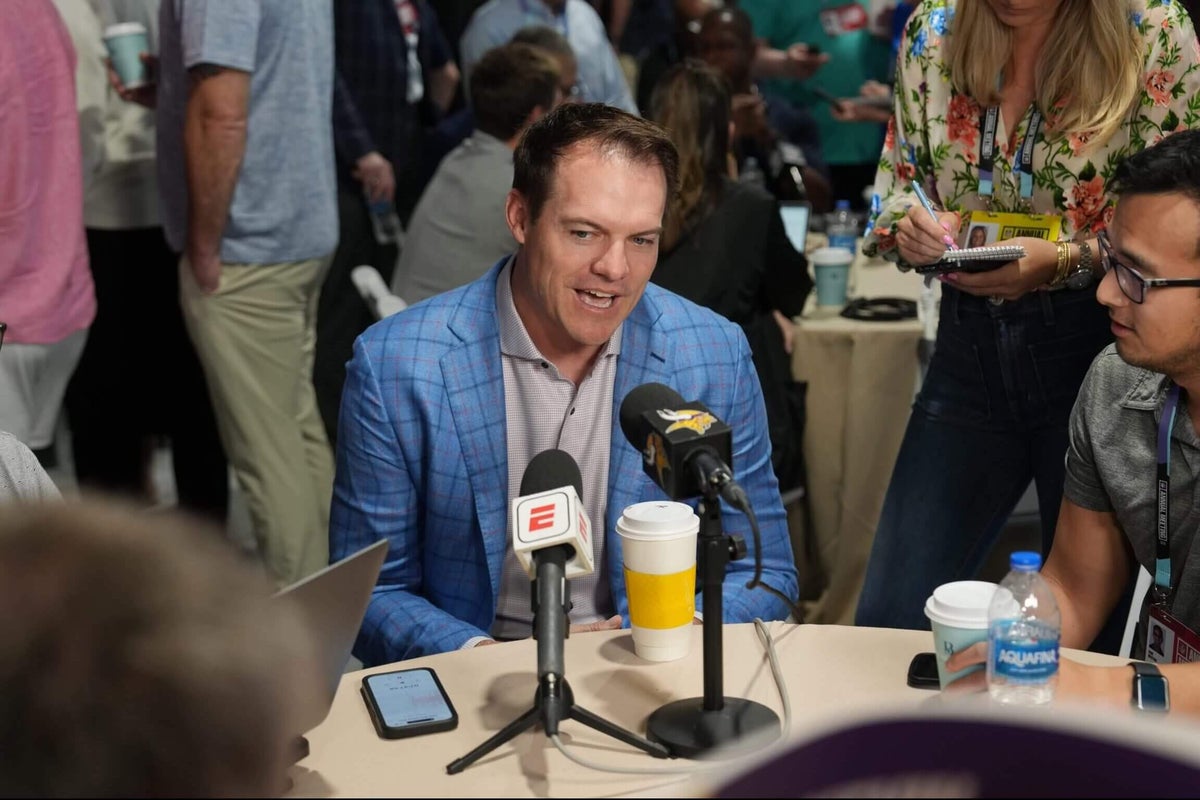

PALM BEACH, Fla. — After this week, only one major offseason event remains: the 2025 NFL Draft.
The Minnesota Vikings attended the NFL Scouting Combine and had a great deal of success in the free-agent period. On Sunday, the team’s key decision-makers traveled south to the Breakers Hotel for the NFL’s annual league meetings, which will wrap up Tuesday. Most, if not all, of the outstanding questions have been answered.
Advertisement
Coach Kevin O’Connell and co-owner Mark Wilf met with reporters Monday. O’Connell spoke again Tuesday morning. The first discussions clarified where things stand with J.J. McCarthy and the quarterback situation, and Tuesday morning allowed for specific roster inquiries.
Here are the notable details from the last few days in Palm Beach.
An update on GM Kwesi Adofo-Mensah’s contract negotiations
Last week, Kwesi Adofo-Mensah answered questions about his contract status. The Vikings have yet to extend their general manager, whose deal runs through the 2025 season, but Adofo-Mensah didn’t spend much time on the topic. He said he has left the dialogue to his agent and is focused on team-building.
Wilf confirmed Monday that the team wants to extend Adofo-Mensah, suggesting the Vikings and Adofo-Mensah’s representation have had “very, very positive” conversations. Keeping Adofo-Mensah and O’Connell in place fits with the owners’ commitment to stability and long-term strategy. The Wilfs don’t want to have knee-jerk reactions like some other NFL owners.
So, why did the Vikings come to terms with O’Connell so quickly this offseason — and not Adofo-Mensah?
“I wouldn’t read anything into it,” Wilf said.
The only other relevant question regarding leadership structure is whether or not the hierarchy for making decisions is likely to be altered. Wilf rejected that possibility, saying the “decision-making tree you guys sometimes focus on is not going to change.”
“We’re so excited about who we were able to add, not just the players but the character we added to the team.”@tatumeverett caught up with GM Kwesi Adofo-Mensah at the NFL Annual Meeting to talk about what the #Vikings did in free agency.
📺: https://t.co/2Y6ssNkslC pic.twitter.com/enRp2xMqTy
— Minnesota Vikings (@Vikings) March 31, 2025
What is Minnesota’s plan at left guard?
There’s no question about four of the Vikings’ five offensive line spots, but left guard remains uncertain. O’Connell said Tuesday that Blake Brandel would likely start at the position if the season began tomorrow.
The season won’t start, though, until September — or well after the NFL Draft later this month. Finding a young interior offensive lineman to pair with Brandel and seventh-rounder Michael Jurgens is a priority.
Advertisement
“There are still some options and opportunities with our four draft picks,” O’Connell said.
The Vikings won’t force the issue, however. They’re not going to select an interior option just for the sake of it, nor are they going to use the 24th pick for short-term gain at the expense of the future.
That said, an interior offensive lineman could align with both the short- and long-term priorities. Add a player like Ohio State’s Donovan Jackson or North Dakota State’s Grey Zabel, and the Vikings would be creating competition for 2025 and providing a potential plug-and-play candidate for other offensive line needs to come.
Minnesota’s offensive staff values Brandel and thinks there is a considerable difference in his performances with left tackles Christian Darrisaw and Cam Robinson. Having him under contract and Jurgens developing alongside him keeps the Vikings from having to force the issue in the draft.
Why the Vikings were so interested in CB Isaiah Rodgers
Brian Flores was once a scout for the New England Patriots. So, while the Vikings’ defensive coordinator is currently best known for his play calling and defensive designs, his eye for talent is not lost on the organization.
Like Philadelphia Eagles defensive coordinator Vic Fangio, he viewed Zack Baun as a potential breakout player last spring. Philadelphia benefited from that evaluation. This year, in exploring potential signees, Flores had a similar feeling about cornerback Isaiah Rodgers.
The 27-year-old played sparingly in Philadelphia but started nine games for the Indianapolis Colts in 2022. A yearlong gambling suspension in 2023 displaced Rodgers from his trajectory, but the Vikings signed him with the idea that he can become a productive full-time player.
“I haven’t been doing this long with (Flores),” O’Connell said, “but when Flo has that kinda tone in his voice about guys … he’s been pretty darn accurate. So, no pressure on Isaiah.”
Advertisement
O’Connell described Rodgers as an “every-down, impact guy,” which suggests he could have a starting role opposite Byron Murphy Jr. Minnesota is not going to stay stagnant and keep cornerbacks on specific sides under Flores, but the staff now has multiple players who can play a number of roles. Murphy can play inside and outside. Rodgers can press and cover across the field. Another addition, Jeff Okudah, thrives in shorter areas with physicality.
Flores and the Vikings staff can mix and match all of these young players — Mekhi Blackmon and Dwight McGlothern included — depending on the opponent’s personnel and style.
Where RB Jordan Mason fits into the offensive mix
Minnesota monitored San Francisco closely this spring. First, the Vikings wanted to see what the 49ers would do with defensive tackle Javon Hargrave. Second, they were curious how the 49ers would proceed with running back Jordan Mason.
Mason was a restricted free agent, and the 49ers’ approach would potentially make Mason available. And although the Vikings felt strongly about the running back prospects in the draft, they knew what Mason was. He showed them in Week 2 of this past season, running for 100 yards against them on 20 carries.
Mason had the vision for zone cutbacks. He possessed the physicality for gap runs. Meanwhile, O’Connell was not naive to one of the faults of the 2024 roster: Minnesota struggled mightily on short-yardage rushing attempts. The Vikings ranked 31st in the NFL in success rate in goal-to-go situations, and they finished in the bottom third in late-down rushing efficiency. Mason could help in both instances.
“We’ve really left a lot to be desired as a football team (in those opportunities),” O’Connell said. “And that starts with me to make sure we improve in that area because we certainly have improved personnel-wise.”
Mason’s presence also prevents veteran Aaron Jones from having an unreasonable workload. Fewer carries mean fewer chances to get hit, and fewer chances to get hit mean a higher likelihood he is healthy and available. Especially late in the season, when the Vikings would prefer to utilize the entire spectrum of Jones’ skills, including in the pass game.
Advertisement
The best of the rest
• In the draft, will the Vikings’ strategy be to take the best player available? Yes and no, according to O’Connell.
“What you don’t want is ‘best player available,’ but with such a tremendous roadblock to getting on the field in front of them,” the head coach said. Receiver, for example, is likely to be a target. Throwing a dart at one in the first round is possible, but it may make less sense if there’s not a clear runway for that player to have a big role.
• O’Connell credited Adofo-Mensah and the Vikings’ personnel staff for their approach to acquiring talent while also setting the franchise up for compensatory picks in 2026. Signees like Hargrave and Jonathan Allen were released, so they did not count against the Vikings’ compensatory formula.
Over The Cap’s Nick Korte currently projects the Vikings to be in line for a third-rounder and fifth-rounder (because of Sam Darnold and Cam Robinson, respectively). O’Connell mentioned Tuesday the possibility of the Vikings receiving “two or potentially three even high-level comp picks,” which may also factor in playing time figures for Denver Broncos wide receiver Trent Sherfield Sr. or Jacksonville Jaguars tight end Johnny Mundt.
• The Vikings never planned to add both center Ryan Kelly and right guard Will Fries, according to O’Connell. Kelly became a possibility, then he helped the Vikings land Fries, who had countless suitors. Acquiring both players speaks to what the Vikings have built from a cultural standpoint to attract talent. Minnesota has become a destination for players seeking the best facilities and resources, even if that means opting against their previous team.
(Photo: Jim Rassol / Imagn Images)
This news was originally published on this post .




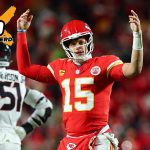
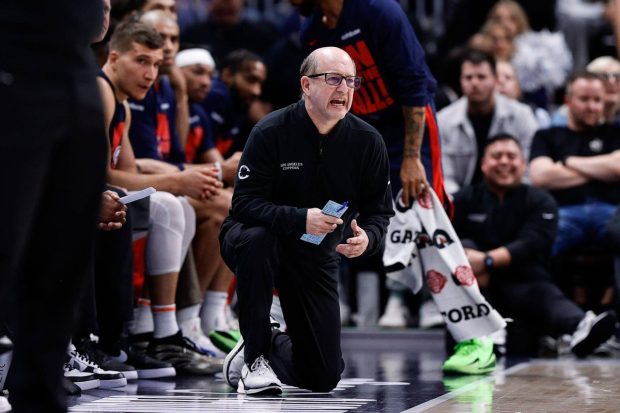
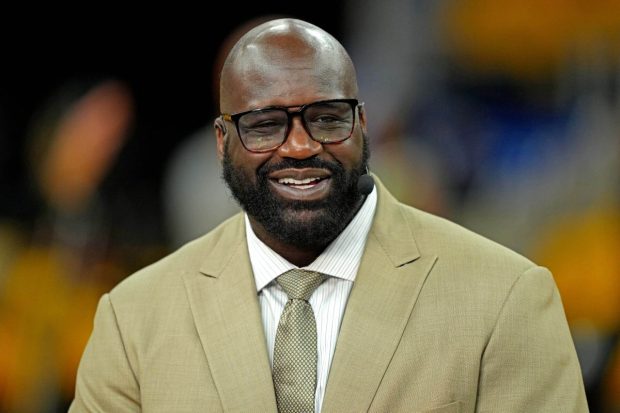
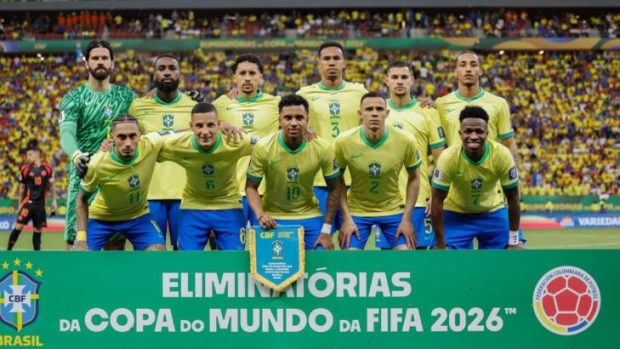

Be the first to leave a comment